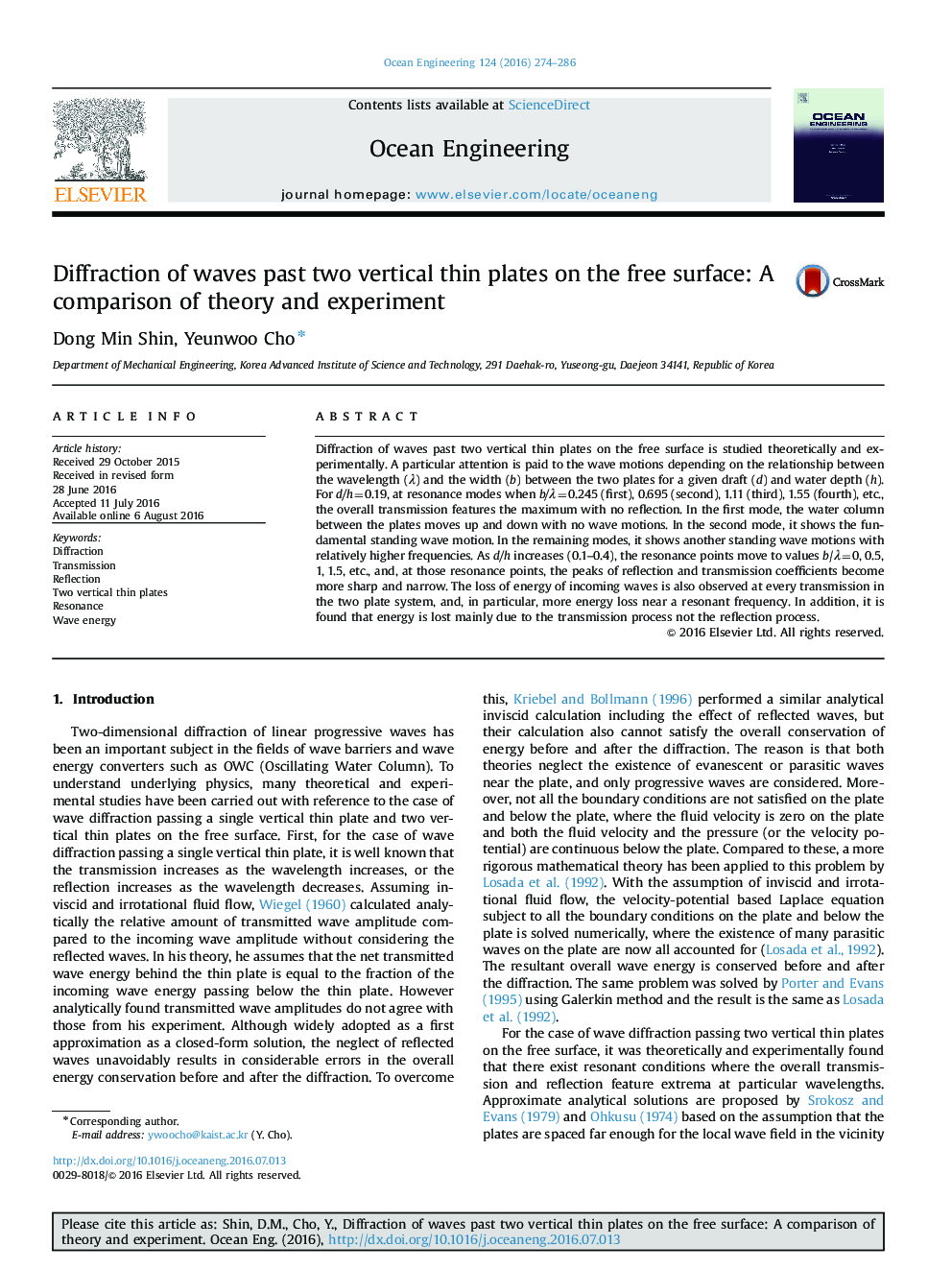| کد مقاله | کد نشریه | سال انتشار | مقاله انگلیسی | نسخه تمام متن |
|---|---|---|---|---|
| 1724973 | 1520666 | 2016 | 13 صفحه PDF | دانلود رایگان |
• Both experimental and theoretical studies are carried out on the diffraction of waves past two vertical thin plates on the free surface.
• It is found that, for d/h=0.19, at resonance when b/λ=0.245, 0.695, 1.11, 1.55, etc., the overall transmission features the maximum with no reflection, where λ is the wavelength and b is the width between the two plates.
• As the value of d/h increases (0.1–0.4), the resonance points move to values b/λ=0, 0.5, 1, 1.5, etc., and, at those resonance points, the peaks of reflection and transmission coefficients become more sharp and narrow.
• At resonant conditions, the detailed wave motion between the plates has hardly been reported theoretically or experimentally before, and this is the main subject of this paper.
• The loss of energy of incoming waves is found to occur at every transmission in the two plate system, and, in particular, more energy is lost near a resonant frequency.
• It is found that energy is lost mainly due to the transmission process not the reflection process.
Diffraction of waves past two vertical thin plates on the free surface is studied theoretically and experimentally. A particular attention is paid to the wave motions depending on the relationship between the wavelength (λ) and the width (b) between the two plates for a given draft (d) and water depth (h). For d/h=0.19, at resonance modes when b/λ=0.245 (first), 0.695 (second), 1.11 (third), 1.55 (fourth), etc., the overall transmission features the maximum with no reflection. In the first mode, the water column between the plates moves up and down with no wave motions. In the second mode, it shows the fundamental standing wave motion. In the remaining modes, it shows another standing wave motions with relatively higher frequencies. As d/h increases (0.1–0.4), the resonance points move to values b/λ=0, 0.5, 1, 1.5, etc., and, at those resonance points, the peaks of reflection and transmission coefficients become more sharp and narrow. The loss of energy of incoming waves is also observed at every transmission in the two plate system, and, in particular, more energy loss near a resonant frequency. In addition, it is found that energy is lost mainly due to the transmission process not the reflection process.
Journal: Ocean Engineering - Volume 124, 15 September 2016, Pages 274–286
